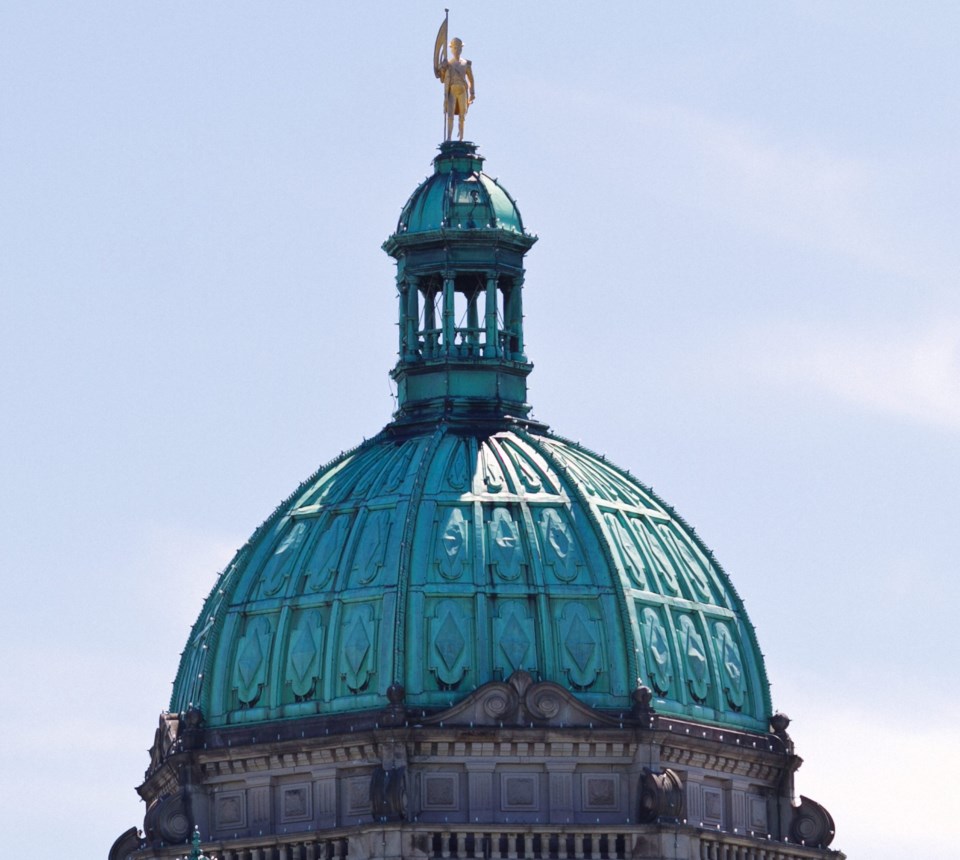 There’s no doubting the sincerity behind B.C.’s new climate change plan.
There’s no doubting the sincerity behind B.C.’s new climate change plan.
The problem is that this is the second time taxpayers have seen this story unfold. Briefly, it goes like this: Government decides to make climate change an all-encompassing priority. It retains a team of experts to put an ambitious plan together. It announces the new agenda with much fanfare and some apocalyptic warnings about how much is at stake.
Where the NDP wants to diverge from the B.C. Liberal storyline is in results. Starting 11 years ago, the previous government did all the above and more. Then the effort stalled and the provincial emission load scarcely moved.
Execution of the plan got off to a promising start, with a six per cent drop in emissions in the first five years. (Those years coincided with the economic meltdown that curtailed economic growth.)
Then emissions started creeping up again. The most recent measure (from two years ago) shows they are down less than four per cent from 2007 levels.
The government is putting the most optimistic interpretation on that trend line. It says that B.C.’s GDP grew by 19 per cent over that period. So B.C. has “decoupled” emissions from economic growth. Their conclusion is that climate change can be addressed without curtailing economic growth. That depends on the interpretation of “addressed.”
B.C. is now nowhere near the 2020 checkpoint it was supposed to meet. That target has been abandoned in favour of a new one — a 40 per cent cut by 2030.
So B.C. is facing an even bigger challenge now than the one set out in 2007. It has almost the same amount of time allowed then to meet a benchmark that is about a third tougher than the previous one.
Both governments’ plans have or had the same final target — an 80 per cent reduction in provincial emissions from 2007 levels by 2050.
The new plan, branded as CleanBC, got a generally favourable response, with buy-in from a wide spectrum.
The only big question raised was acknowledged by the government itself. The entire suite of measures announced last week to cut 19 million tonnes of annual greenhouse-gas emissions only gets the province three-quarters of the way to the 2030 target.
“This plan describes specific reductions from the first set of actions totalling more than 75 per cent. Over the next 18 to 24 months, we will identify additional reductions across more sectors of our economy with the strong potential to exceed the remaining 25 per cent of our 2030 goals.”
There are numerous specific measures in the plan with reduction targets. They are either new mandates that business and individuals will have to meet, or new incentives that will encourage everyone away from oil.
The first glimpse of the cost of those incentives will come in the next budget. It’s a huge bill and it’s the carbon tax that will be relied on to cover much of it.
That tax brought in more than $1 billion in its last year of revenue neutrality, when corresponding tax cuts elsewhere more than made up for the imposition. Now the tax is being raised incrementally by two-thirds over the next few years. And the revenue neutrality is gone, so there’s no legal requirement to match the hikes with cuts.
It will bring in hundreds of millions more as a standalone tax.
Much of that is earmarked in the plan. Money will pour into the rebate program for purchasers of zero-emission vehicles, to the point that more than half a million could be on the road by 2030.
A similar rebate will encourage the purchase of heat pumps for businesses and residences. The plan foresees 310,000 more of them in use.
A big chunk of the carbon-tax revenue will flow to industry through incentives for cleaner operations.
And crucially, the carbon-tax rebate cheques for northern, rural and low-to-middle income earners will have to increase, to keep pace with the tax itself.
Just So You Know: There’s another similarity in the B.C. Liberal and NDP governments’ climate action plans — our neighbour loved them both equally.
Washington Gov. Jay Inslee’s blurb on last week’s plan was prominently displayed, as he congratulated B.C. for “helping blaze a trail toward hope and opportunity.”
“Premier Horgan’s vision builds on B.C.’s history of climate leadership. ”
Inslee was just as enthusiastic two years ago about the previous government’s updated plan.
“This new plan is comprehensive and visionary. … I applaud Premier Christy Clark’s leadership.”



